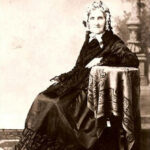Modern Family (2009) quickly became a cultural phenomenon, lauded for its comedic portrayal of diverse family structures. Within this ensemble cast, the characters of Mitchell (Mitch) Pritchett and Cameron (Cam) Tucker stood out, offering a significant, albeit nuanced, representation of a gay couple in mainstream media. This analysis delves into the character of Mitch, exploring how he and Cam challenged and, at times, reinforced traditional gay stereotypes, ultimately contributing to a more complex portrayal of LGBTQ+ individuals on television.
One of the most impactful ways Mitch and Cam’s relationship defied pre-conceived notions was through their unwavering commitment to each other. From the outset of the series, they were presented as a stable, long-term couple, having already shared five years together and embarking on the journey of parenthood through adoption. This conscious decision by show creators to introduce them firmly established in a committed relationship directly challenged the damaging stereotype of gay men as inherently promiscuous. Unlike media portrayals that often fixated on fleeting encounters or unstable relationships, Mitch and Cam offered a contrasting narrative of loyalty and enduring love. This depiction resonated with audiences and broadened the understanding of gay relationships beyond superficial tropes. The very foundation of their characters was built upon commitment, family, and the everyday realities of navigating life as a couple, thereby normalizing gay relationships for a wider viewership.
Further subverting stereotypes, Mitch and Cam’s decision to adopt Lily, a Vietnamese baby, placed them at the forefront of conversations surrounding same-sex parenting. By choosing to raise a child as a gay couple, they directly confronted societal norms and prejudices associated with traditional family structures. They knowingly entered a space where they would face scrutiny and judgment, highlighting the societal challenges LGBTQ+ families often encounter. The show subtly addressed these external pressures, such as in the pilot episode where Mitch misinterprets a woman’s comment about “creme puffs” as a homophobic remark directed at their parenting. While the situation turned out to be humorous, it underscored the underlying anxieties and societal biases that same-sex parents often navigate. This episode, and many others throughout the series, showcased Mitch and Cam’s preparedness to defend their family and challenge prejudice, subtly educating audiences and promoting acceptance. Moreover, the portrayal of Mitch and Cam seamlessly transitioning between parental roles further dismantled rigid gender stereotypes often associated with parenting, demonstrating the fluidity and adaptability within same-sex households.
However, while Modern Family undoubtedly broke ground in LGBTQ+ representation, it also operated within the constraints of network television and societal comfort levels. The characterization of Mitch and Cam, particularly their socio-economic background and lifestyle, arguably leaned into another set of gay stereotypes – that of the “white, affluent, trend-setting” urbanite. Their sophisticated tastes, fashionable attire, and comfortable lifestyle, while relatable to some, inadvertently reinforced a narrow image of gay identity. This portrayal, while offering positive visibility, potentially overlooked the diversity within the LGBTQ+ community, failing to fully represent individuals from different racial, ethnic, and socio-economic backgrounds. Given Modern Family’s broadcast on ABC, a network traditionally geared towards family-oriented programming and a mainstream audience, this arguably “safer” representation was a calculated choice. At a time when LGBTQ+ inclusion in media was still a relatively nascent and often debated topic, presenting Mitch and Cam as palatable and relatable to a broad audience likely prioritized widespread acceptance over radical representation.
In conclusion, Mitch Pritchett, as part of the groundbreaking duo Mitch and Cam, played a pivotal role in reshaping gay representation on television through Modern Family. The show successfully challenged harmful stereotypes surrounding commitment and family within gay relationships, bringing visibility and normalcy to same-sex couples in mainstream media. However, it also operated within certain boundaries, and the character of Mitch, while progressive in many ways, also reflected existing stereotypes related to affluence and lifestyle. Ultimately, Modern Family struck a balance, pushing boundaries while remaining accessible to a broad audience, contributing significantly to the ongoing evolution of LGBTQ+ representation in popular culture and paving the way for more diverse and nuanced portrayals in the future.
References
ABC. (n.d.). Modern Family: Pilot – Watch Season 1 Episode 01. Retrieved April 09, 2017, from http://abc.go.com/shows/modern-family/episode-guide/season-01/101-pilot
Pappas, S. (2012, January 16). Gay Parents Better Than Straight Parents? What Research Says. Retrieved April 09, 2017, from http://www.huffingtonpost.com/2012/01/16/gay-parents-better-than-straights_n_1208659.html
Rodriguez, N. (Ph. D). Queer Media Analysis. Lecture. March 22, 2017.
Ross, K. (2014). The handbook of gender, sex, and media. Chichester: Wiley Blackwell

